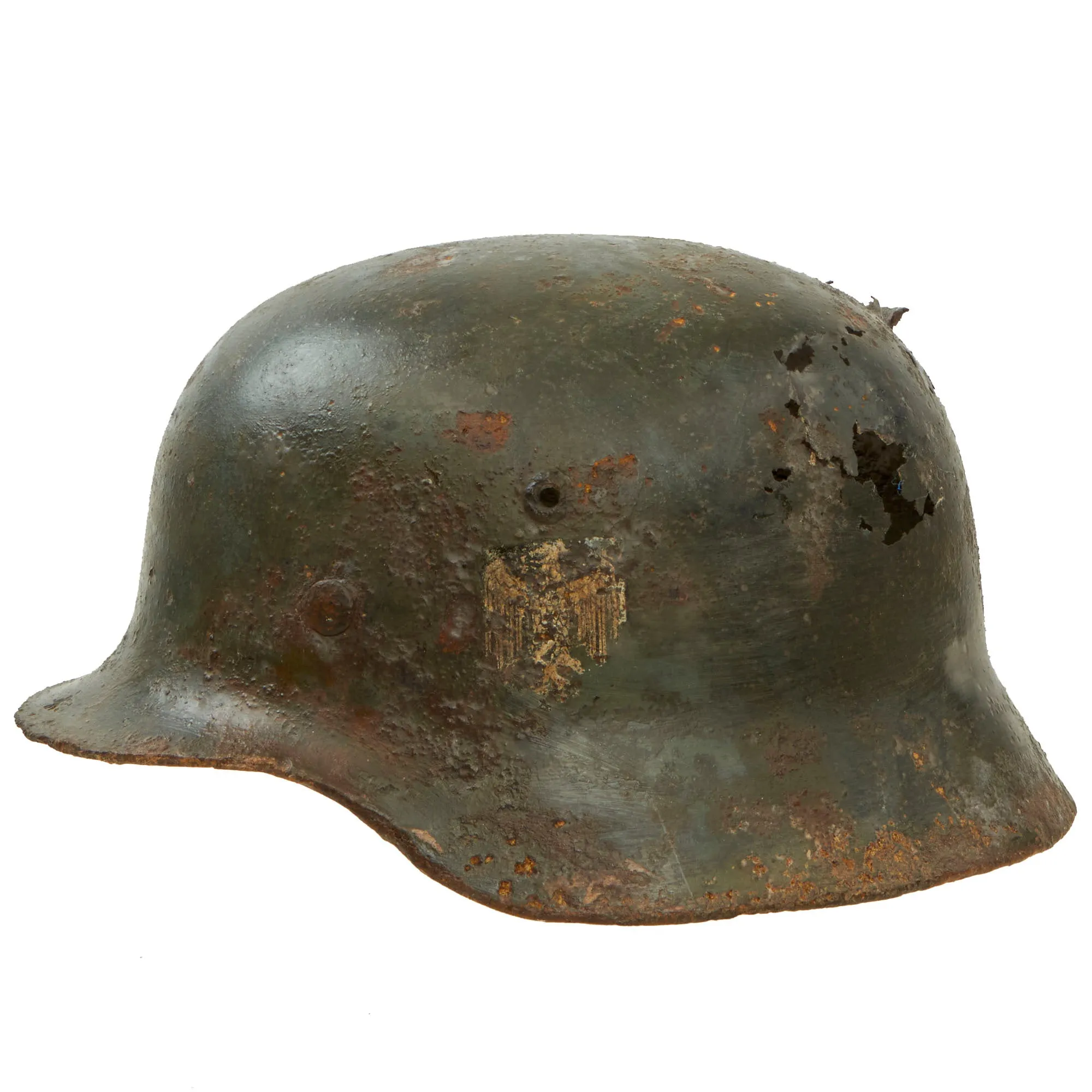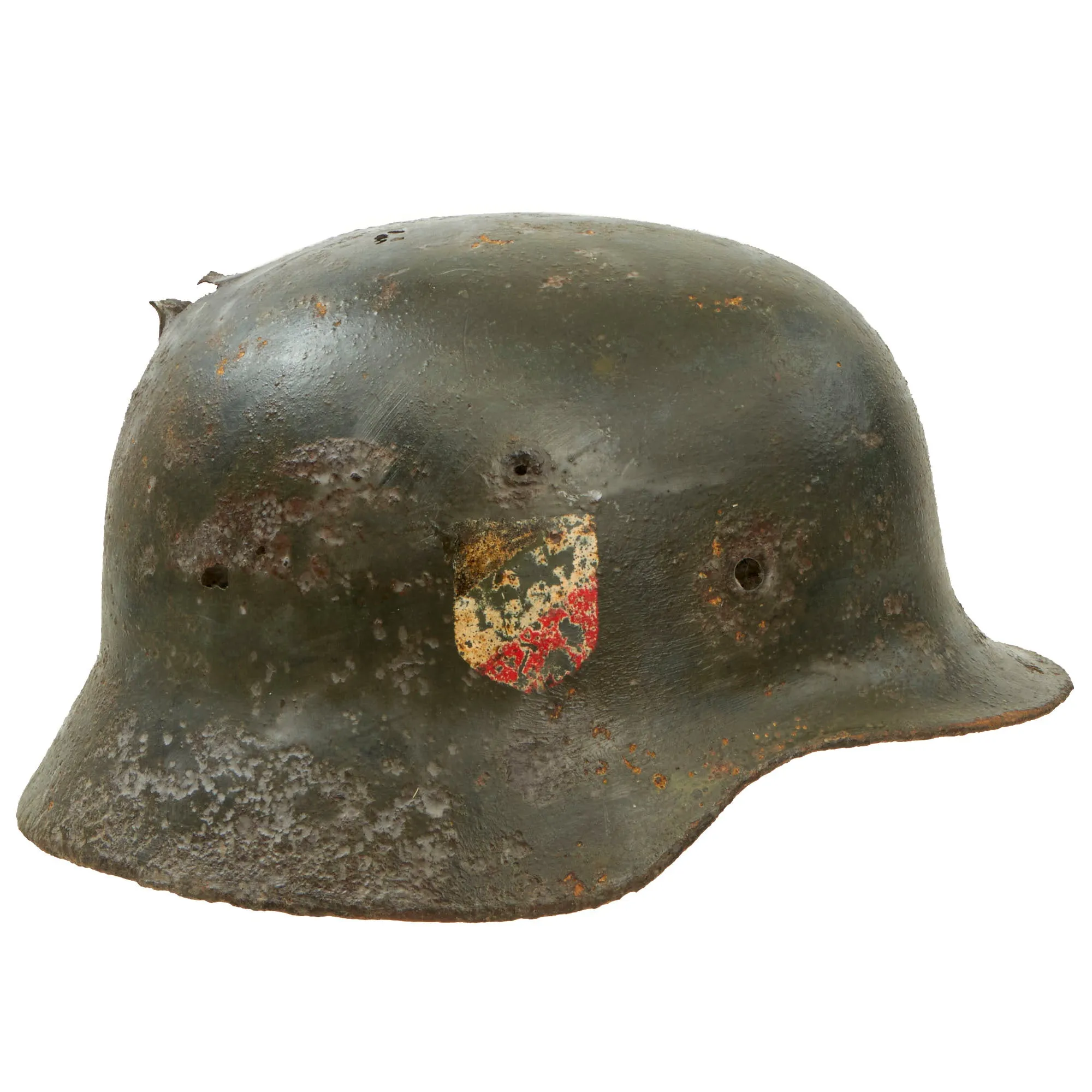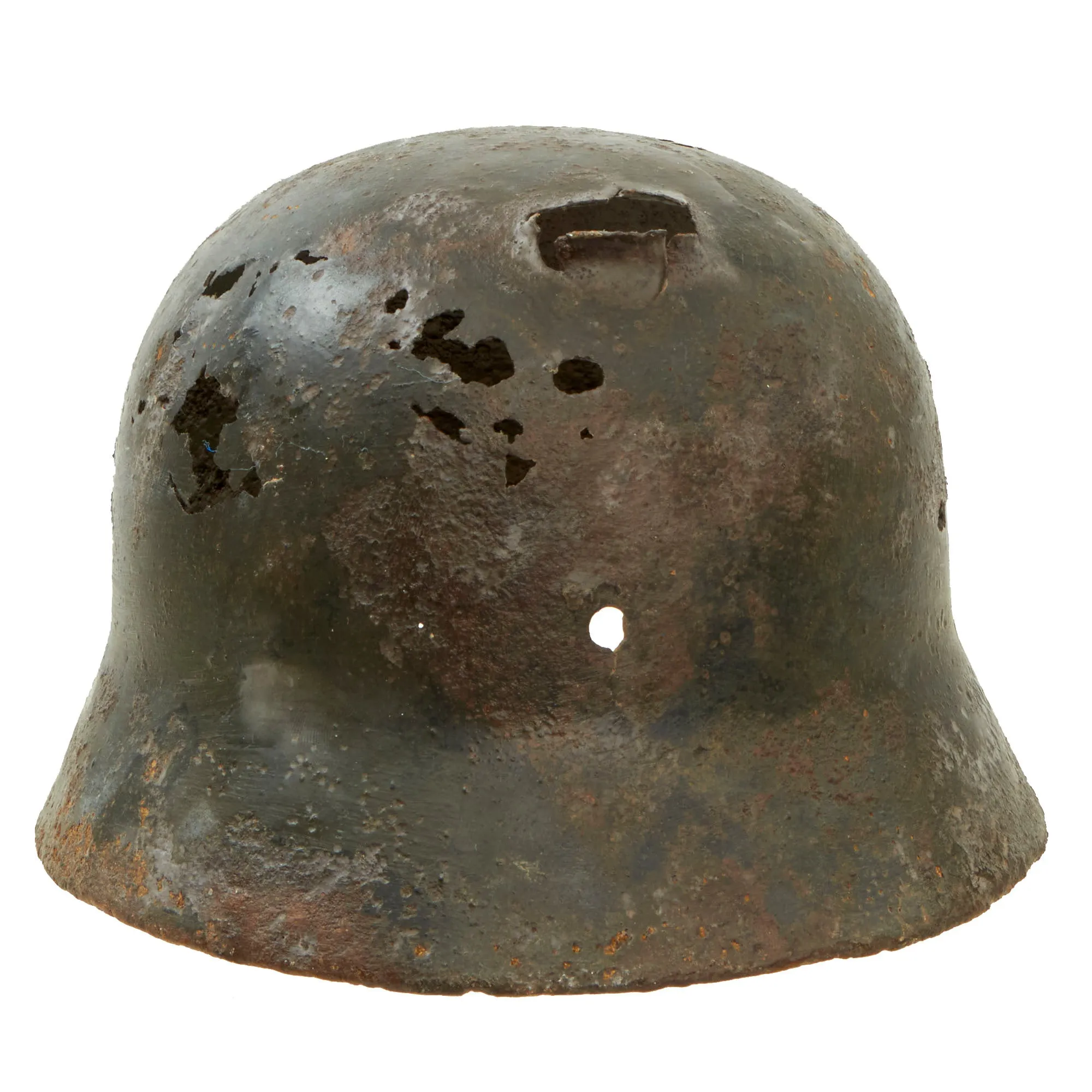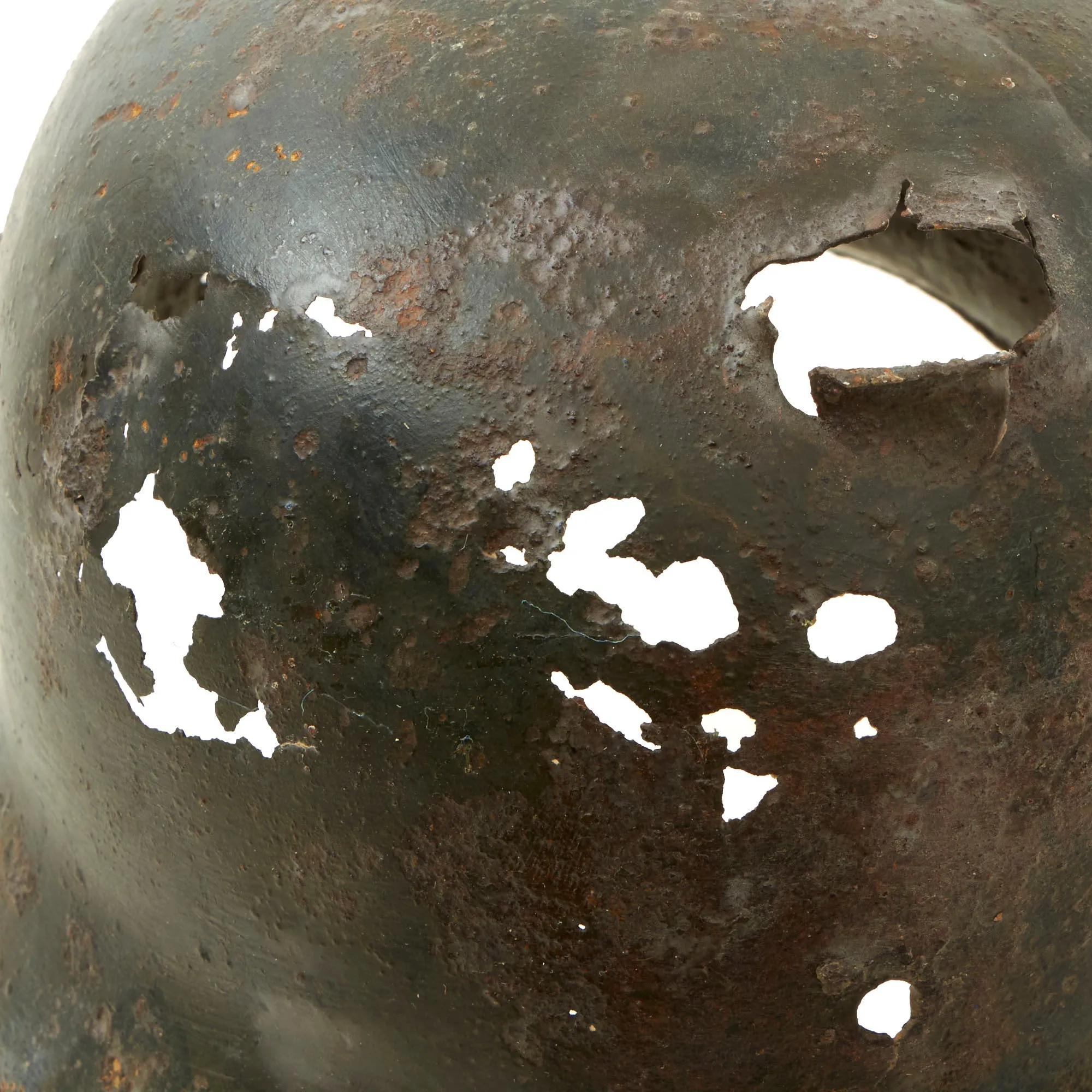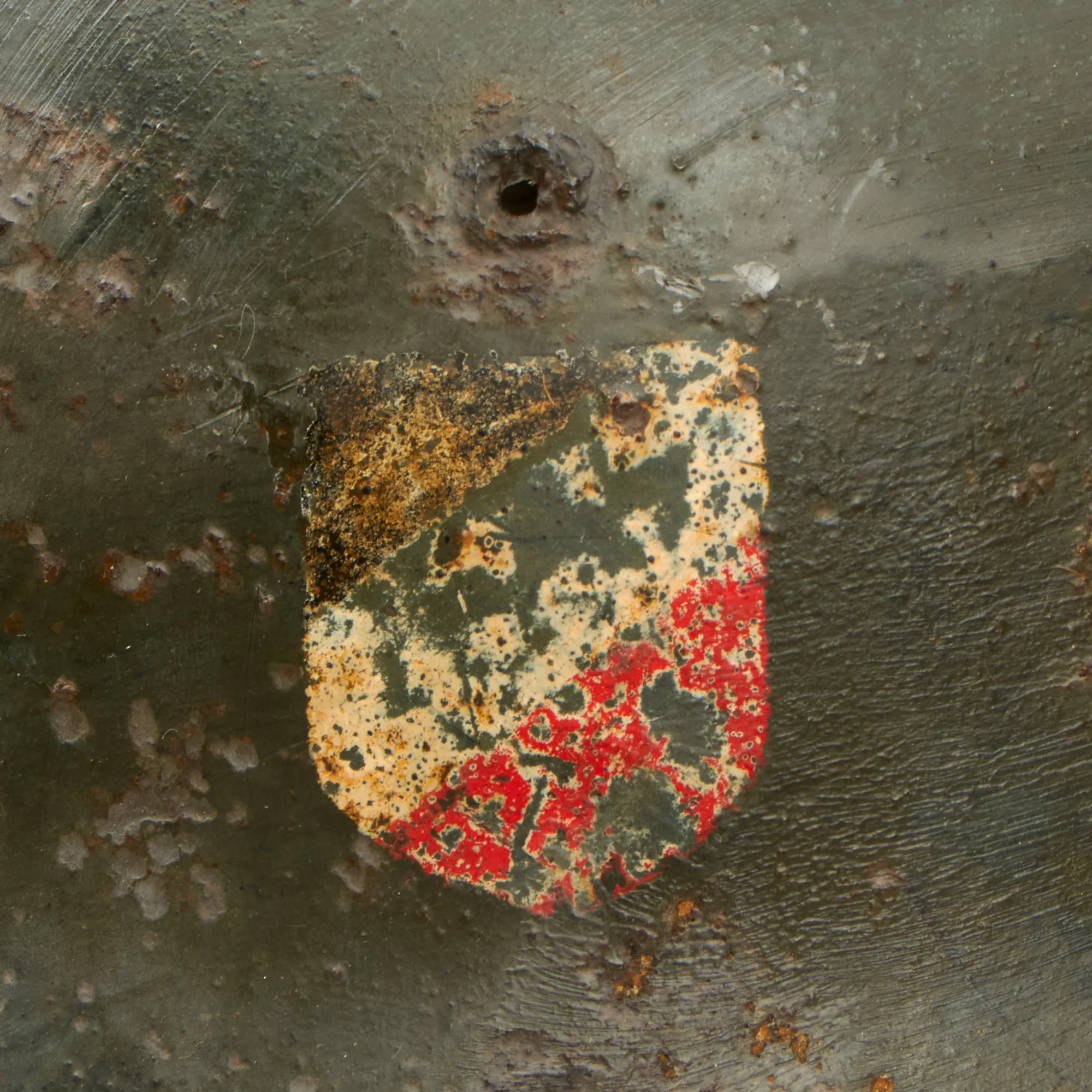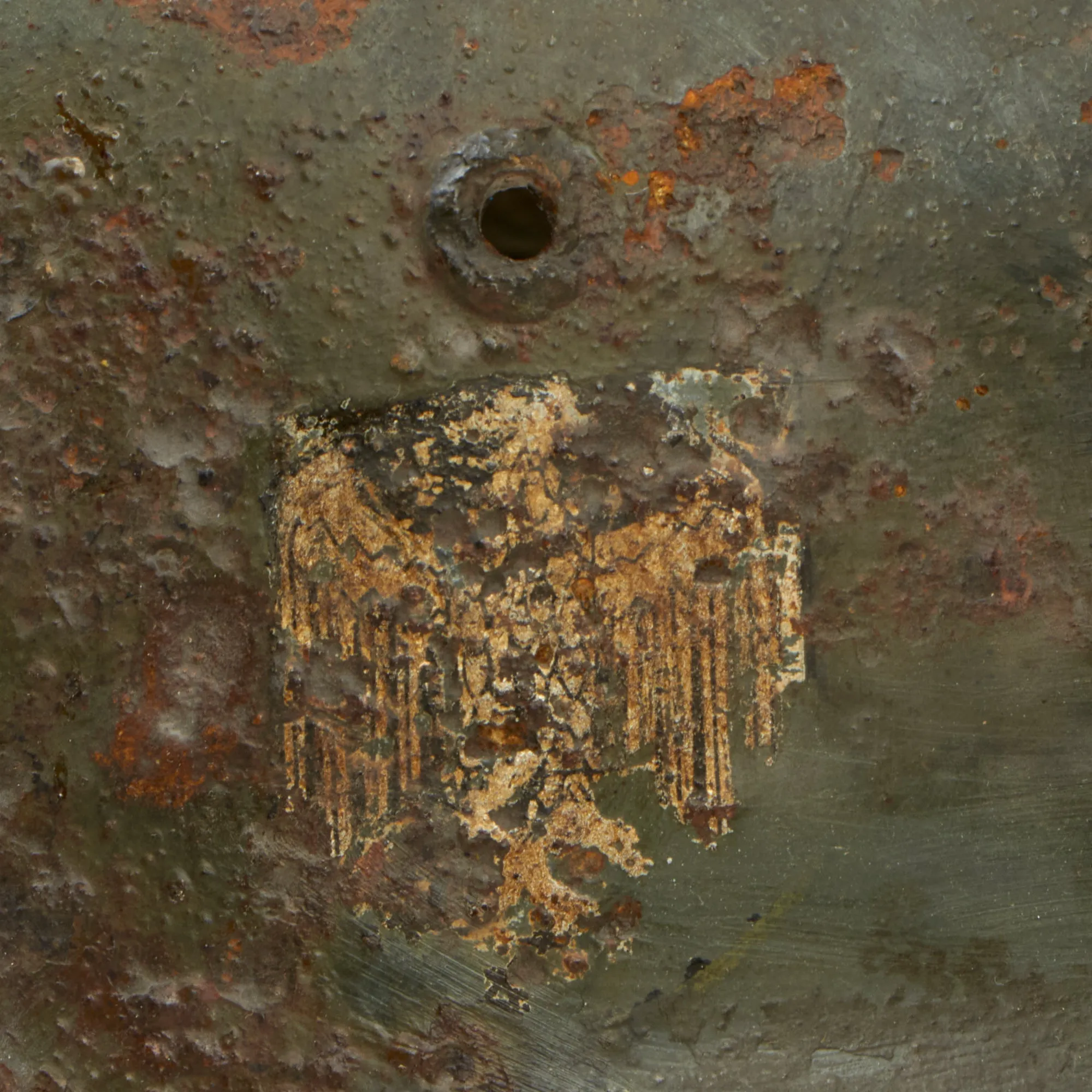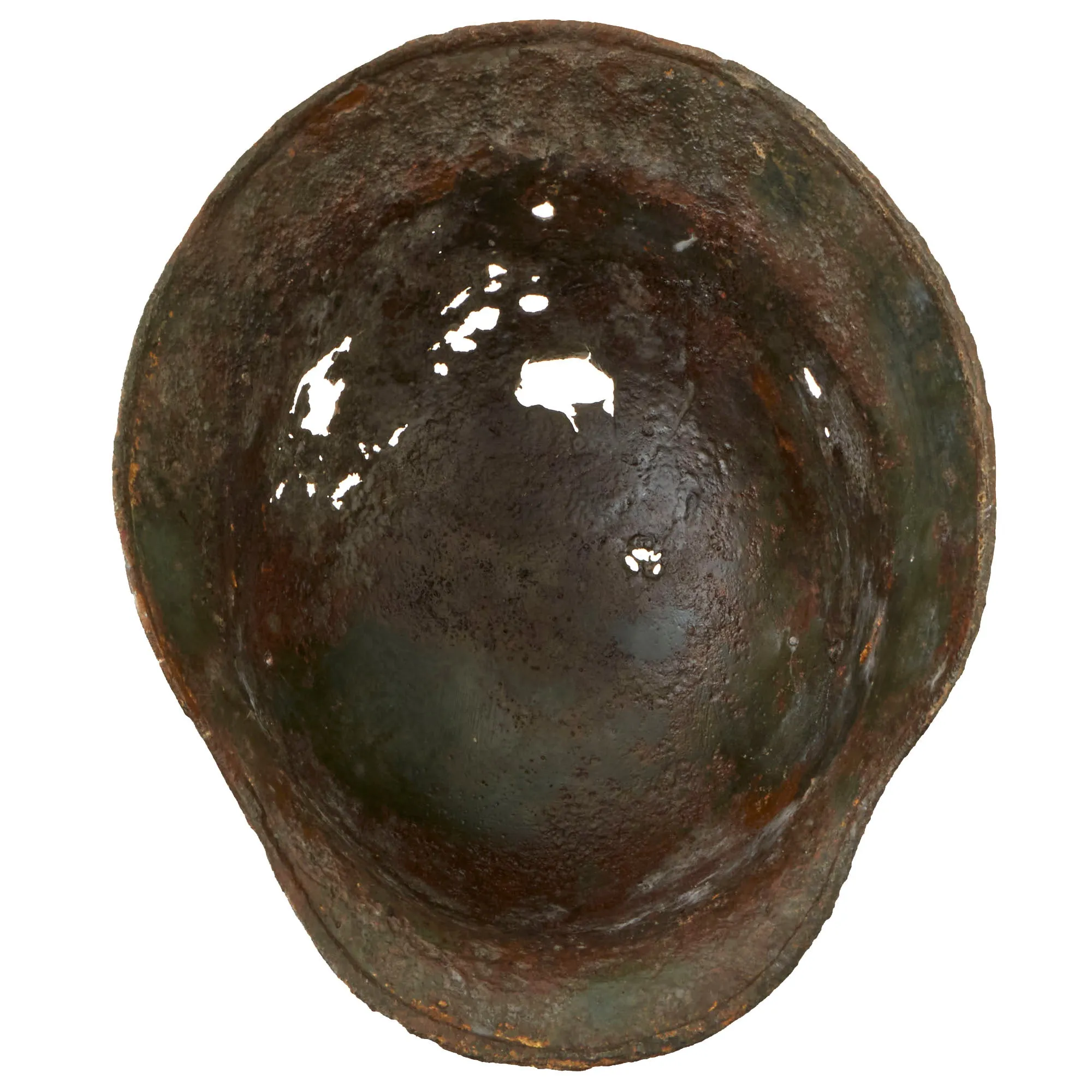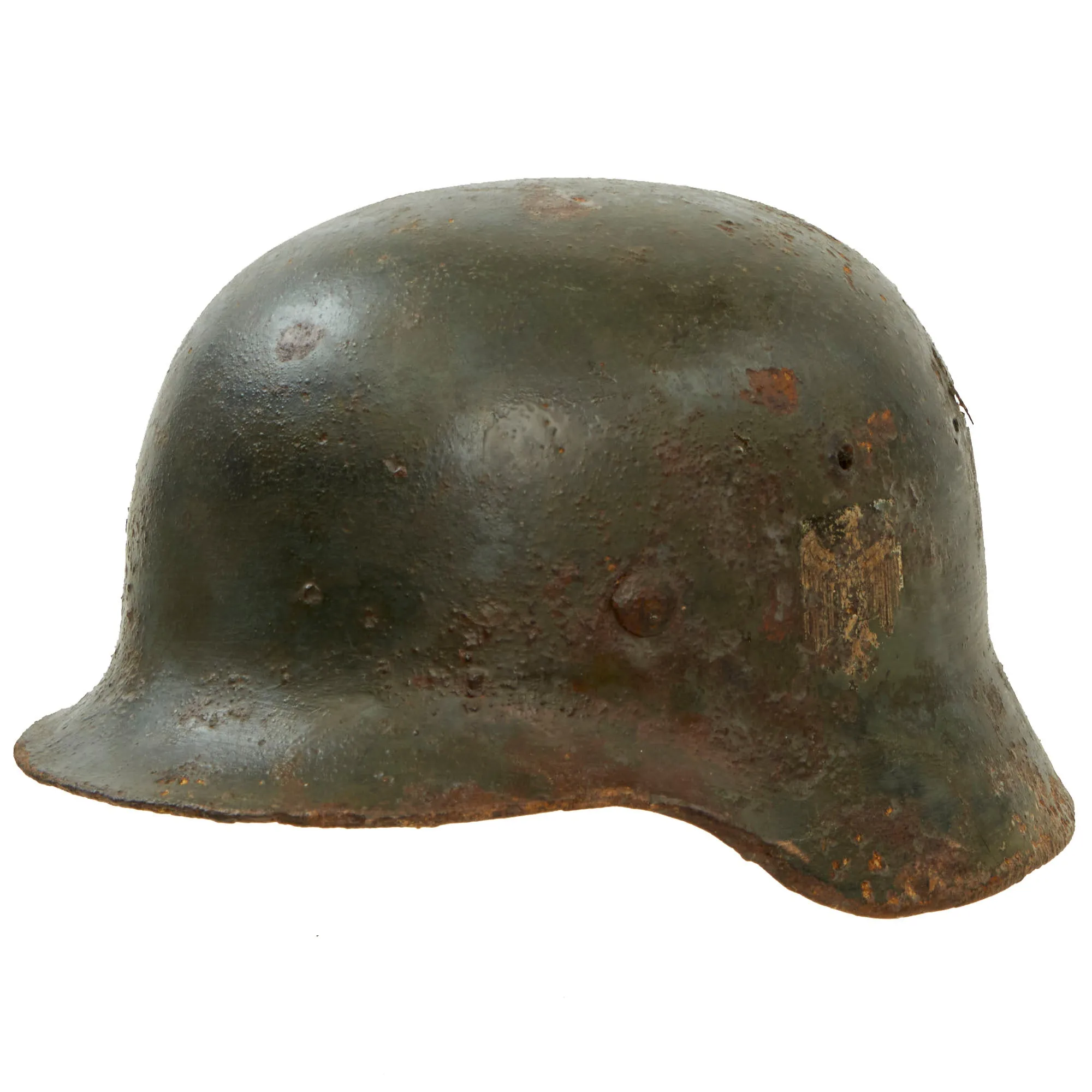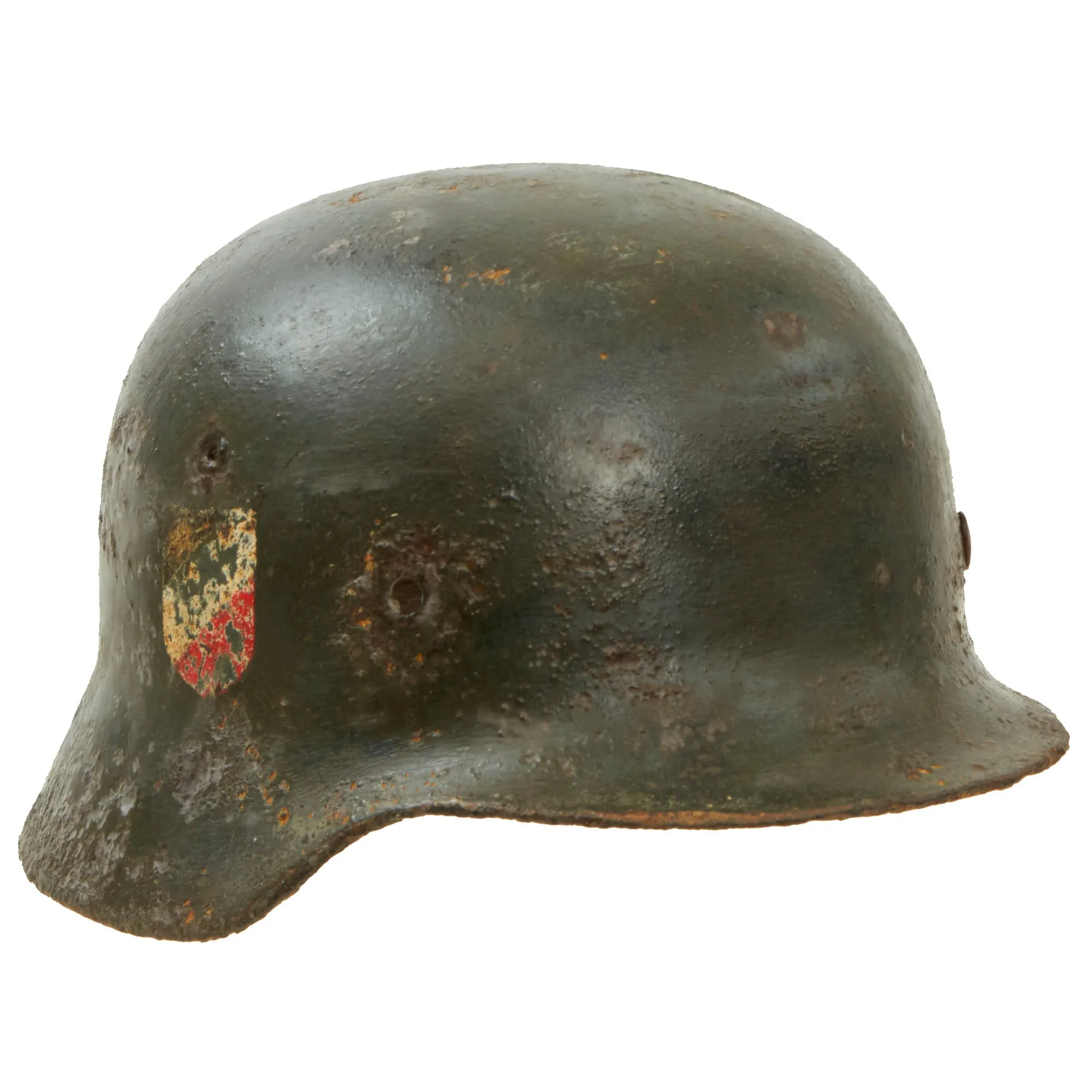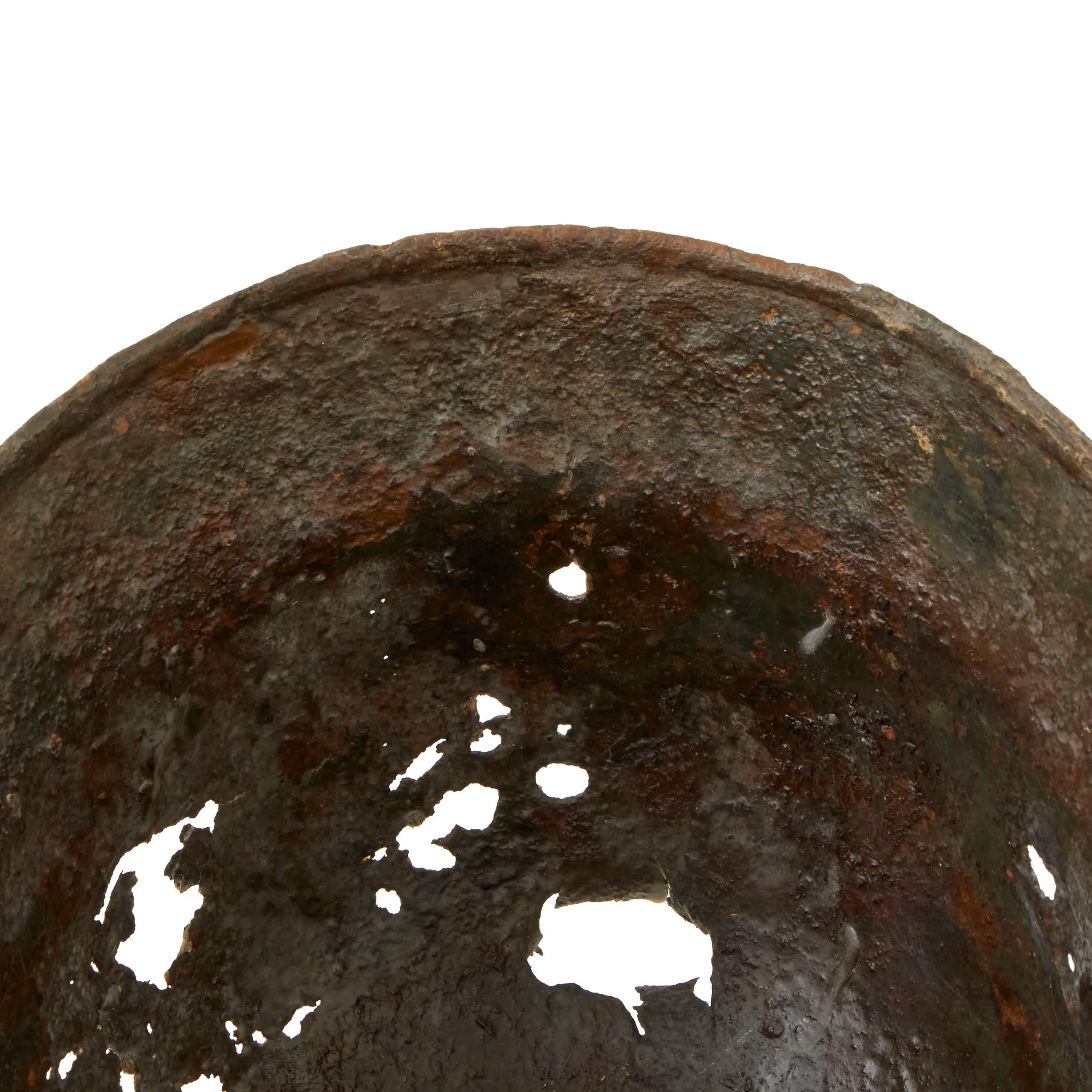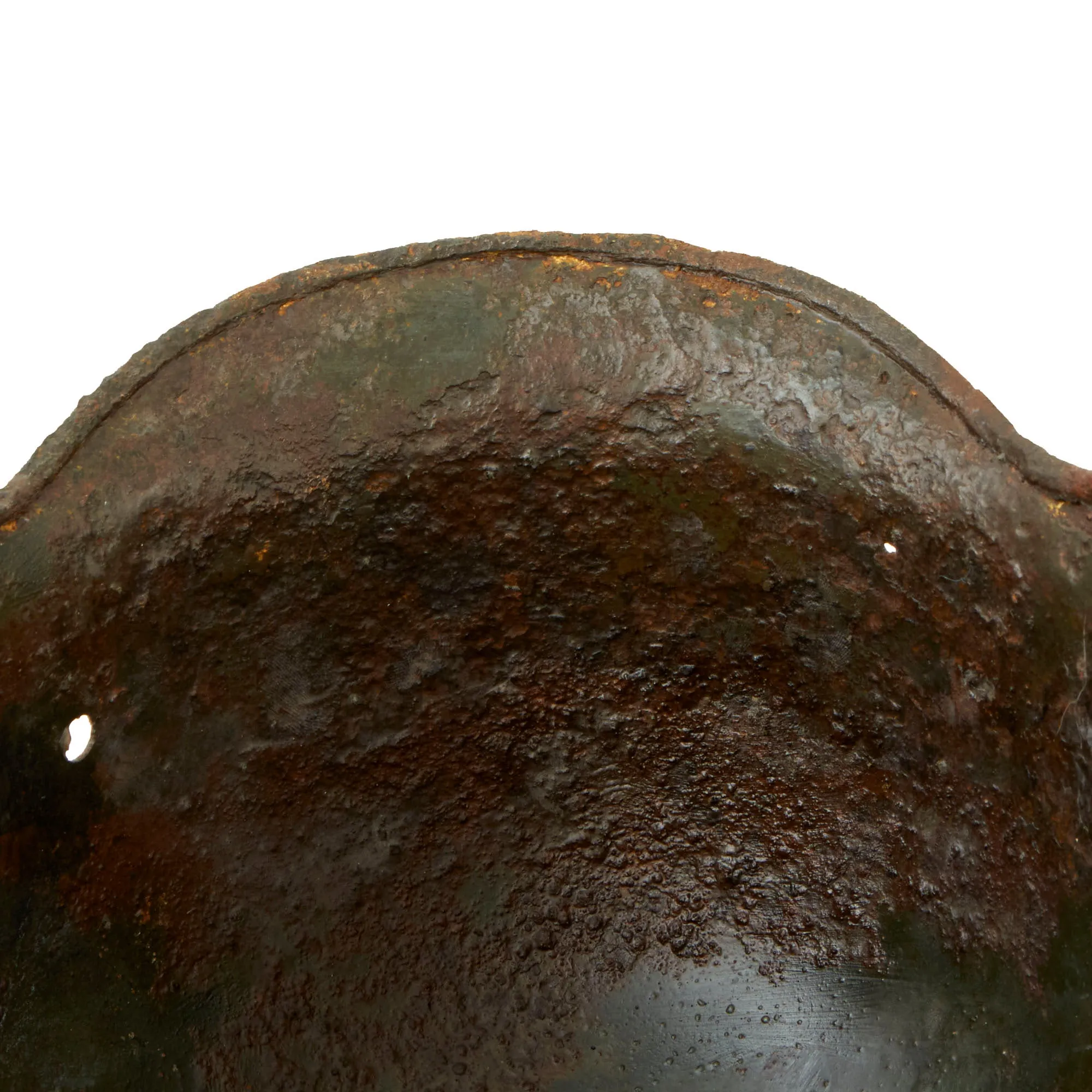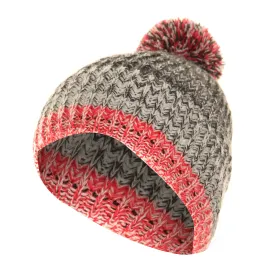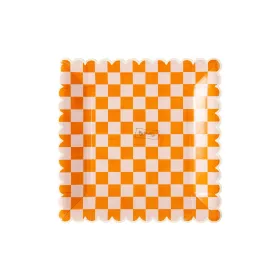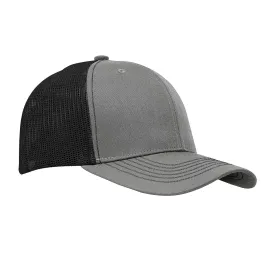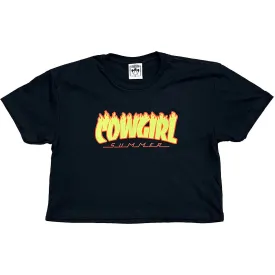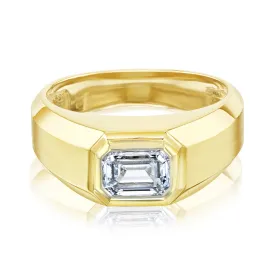Original Item: Only One Available. This is a very nice relic condition all original example of a German WWII M35 helmet shell, issued to the Heer (Army). it definitely looks like it was buried for some time after the war, or was left out in the open, as it shows a lot of weathering and oxidation. There are some holes from oxidation, as well as some possibly from battle damage, and overall it has a fantastic look that cannot be duplicated! It looks to be painted with the correct Apfelgrün (apple green) paint, which is the early war color with more green in the mix.
The use of the second decal was discontinued in 1940, and in 1943 it was ordered that helmets with the national colors have them removed. The decal on this helmet however escaped that fate, so it still has both decals, making it possible that it was buried / lost relatively early in the war. The left side of the helmet features a Heer eagle decal, which is retained about 60%, still bright and reflective, but also with a lot of overall wear and a bit of chipping. The right side of the helmet features a national colors decal, which is also retained about 50%, with definitely more wear.
From what we can tell, after the helmet shell was excavated / discovered, it was cleaned, and then seems to have been coated with some type of waxy protectant to preserve the look. We checked the shell and there are no longer any discernable maker markings, but it measures 65cm on the exterior, so it is a size 64 shell. This is a nice medium size that can accommodate liners from 56cm to 57cm or US 7 to 7 1/8. Size 64 shells are harder to find and are therefore more valuable to a collector. The liner and chinstrap are completely missing, along with the split pins.
Overall a very nice 100% genuine relic condition M35 Double Decal Heer Army helmet! The damage and wear on this gives it an absolutely unique look! This is an item that will only continue to appreciate in value over time!
The first "modern" steel helmets were introduced by the French army in early 1915 and were shortly followed by the British army later that year. With plans on the drawing board, experimental helmets in the field, ("Gaede" helmet), and some captured French and British helmets the German army began tests for their own steel helmet at the Kummersdorf Proving Grounds in November, and in the field in December 1915. An acceptable pattern was developed and approved and production began at Eisen-und Hüttenwerke, AG Thale/Harz, (Iron and Foundry Works), in the spring of 1916.
These first modern M16 helmets evolved into the M18 helmets by the end of WWI. The M16 and M18 helmets remained in usage through-out the Weimar Reichswehr, (National Defence Force, Circa 1919-1933), era and on into the early years of the Third Reich until the development of the smaller, lighter M35 style helmet in June 1935.
In 1934 tests began on an improved Stahlhelm, whose design was a development of World War I models. The Eisenhüttenwerke company of Thale carried out prototype design and testing, with Dr. Friedrich Schwerd once again taking a hand.
The new helmet was pressed from sheets of molybdenum steel in several stages. The size of the flared visor and skirt was reduced, and the large projecting lugs for the obsolete armor shield were eliminated. The ventilator holes were retained, but were set in smaller hollow rivets mounted to the helmet's shell. The edges of the shell were rolled over, creating a smooth edge along the helmet. Finally, a completely new leather suspension, or liner, was incorporated that greatly improved the helmet's safety, adjustability, and comfort for each wearer. These improvements made the new M1935 helmet lighter, more compact, and more comfortable to wear than the previous designs.
The Army's Supreme Command officially accepted the new helmet on June 25, 1935 and it was intended to replace all other helmets in service.
More than 1 million M1935 helmets were manufactured in the first two years after its introduction, and millions more were produced until 1940 when the basic design and production methods were changed.




